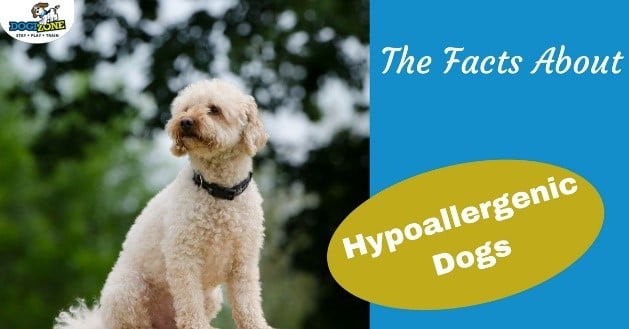The Facts About Hypoallergenic Dogs
Check out the facts about hypoallergenic dogs before getting one

People that are allergic to dogs are not allergic to dog hair; rather they are allergic to the dander, which is the skin cells that are normally shed by the dog. This is not any different than people or animals as all will have some level of dander. Dander is actually microscopic and is not the same as dandruff, which is large flakes of cells that are clearly visible.
With dogs, the dander often clings to the hair follicles and drops off as the dog sheds. The more the dog sheds, the greater the amount of dander in the air, increasing the risk of an allergic response by people in the home or around the pet.
There is a lot of debate in the scientific community and among researchers about the reality of hypoallergenic dog breeds. This is because all dogs produce some level of dander, without regard to their breed or coat type. On the other hand, people with allergies will find that some breeds are better tolerated and do not trigger allergic responses, which seems to be an individual factor among allergy sufferers.
In most cases, and with experimentation, people with mild to moderate allergies to dander will find a dog breed or a mixed breed dog that is well tolerated. There are some breeds or mixed breeds that tend to fall into the category of hypoallergenic due to low shedding and therefore a reduced presence of dander in the air.
With this information, a good place to start is with the named “hypoallergenic” dogs. Just remember, it is really an individual reaction and a breed or mixed breed that is well tolerated by one dog allergy sufferer may not be a good pet for someone else.
The Poodle
Poodles and poodle crosses are considered to be one of the best options in hypoallergenic dogs. Poodles come in all sizes and colors from the very tiny teacup Poodle to the larger toy or the full-sized standard.
Lively, loving and very smart, the Poodle is a great match for seniors through to young children. They shed very little but do require regular coat care that will include grooming and often includes clipping.
The Labradoodle and the Goldendoodle, which are a cross between a Lab and Poodle and Golden Lab and a standard Poodle are also a great option for most mild allergy sufferers.
The Maltese and the Bichon Frise
A small dog, the Maltese looks like a little ball of white fluff as a puppy. As an adult, if not clipped, the coat is long and sweeping and requires regular care. They are highly intelligent, small dogs that love nothing more than to spend time with their owners. Definitely not a guard dog, these are excellent companion pets that will adapt easily to apartment life.
The Bichon Frise is also white, with the same great personality as the Maltese. They have a corkscrew curl coat this is typically clipped for easy care.
Portuguese Water Dog
Similar in playful and family-friendly nature to the Lab, the Portuguese Water Dog has a curly coat, an active and enthusiastic manner and a naturally playful outlook on life. This is the breed that was selected by President Obama and Mrs. Obama while they were living in the White House.
These are a larger size of dog that requires room to run and regular exercise. While they are physically big, they can do well in the city and in a small living space if they have lots of time with the family and routine exercise.
Always spend time around any breed or mixed breed dog before choosing a specific dog as a pet if you have pet related allergies. This will ensure the dog is a good match and doesn’t trigger an allergic reaction.

